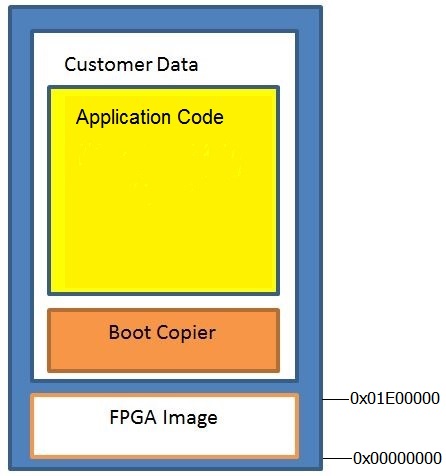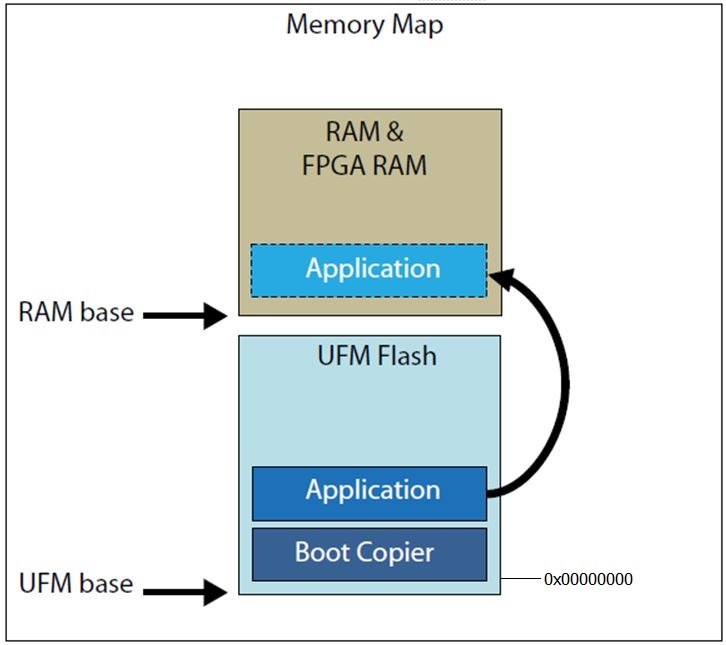1.4.1. Memcpy-Based Boot Copier
Memcpy-based boot copier supports MAX® 10 UFM, EPCQ and CFI flash memory. The boot copier is stored within the flash memory as the flash controller supported Execute-in-Place (XiP). Subsequent boot image is located just right after the boot copier. You need to ensure the Nios II reset vector offset points to the start of the boot copier.
The following figure shows the flash memory map for EPCQ and CFI flash when using a boot copier. This memory map assumes a FPGA image is stored at the start.

The following diagram shows the memory map of a system using UFM flash and the memcpy-based controller. Since the FPGA image (*.sof) is stored in MAX10 CFM section, the boot copier is located at the base address of UFM, followed by the application code. Hence, the Nios II reset vector offset can be set to address 0x00000000 in Qsys.

- HEX file during memory initialization file generation ("mem_init_generate" target) in the Quartus Prime Programming Flow method
- SREC image (*.flash) file during elf2flash utility execution in the Nios II Flash Programming Flow method